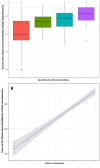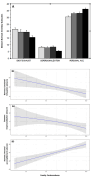Family centeredness of care: a cross-sectional study in intensive care units part of the European society of intensive care medicine
- PMID: 38771395
- PMCID: PMC11109056
- DOI: 10.1186/s13613-024-01307-0
Family centeredness of care: a cross-sectional study in intensive care units part of the European society of intensive care medicine
Abstract
Purpose: To identify key components and variations in family-centered care practices.
Methods: A cross-sectional study, conducted across ESICM members. Participating ICUs completed a questionnaire covering general ICU characteristics, visitation policies, team-family interactions, and end-of-life decision-making. The primary outcome, self-rated family-centeredness, was assessed using a visual analog scale. Additionally, respondents completed the Maslach Burnout Inventory and the Ethical Decision Making Climate Questionnaire to capture burnout dimensions and assess the ethical decision-making climate.
Results: The response rate was 53% (respondents from 359/683 invited ICUs who actually open the email); participating healthcare professionals (HCPs) were from Europe (62%), Asia (9%), South America (6%), North America (5%), Middle East (4%), and Australia/New Zealand (4%). The importance of family-centeredness was ranked high, median 7 (IQR 6-8) of 10 on VAS. Significant differences were observed across quartiles of family centeredness, including in visitation policies availability of a waiting rooms, family rooms, family information leaflet, visiting hours, night visits, sleep in the ICU, and in team-family interactions, including daily information, routine day-3 conference, and willingness to empower nurses and relatives. Higher family centeredness correlated with family involvement in rounds, participation in patient care and end-of-life practices. Burnout symptoms (41% of respondents) were negatively associated with family-centeredness. Ethical climate and willingness to empower nurses were independent predictors of family centeredness.
Conclusions: This study emphasizes the need to prioritize healthcare providers' mental health for enhanced family-centered care. Further research is warranted to assess the impact of improving the ethical climate on family-centeredness.
© 2024. The Author(s).
Conflict of interest statement
None of the authors report any conflict of interest with this study.
Figures



References
-
- Molter NC. Family-centered critical care: an interview with Nancy C. Molter, MS, RN, CCRN. Interview by Jane Stover Leske. AACN Clin Issues Crit Care Nurs. 1991;2:185–7. - PubMed

